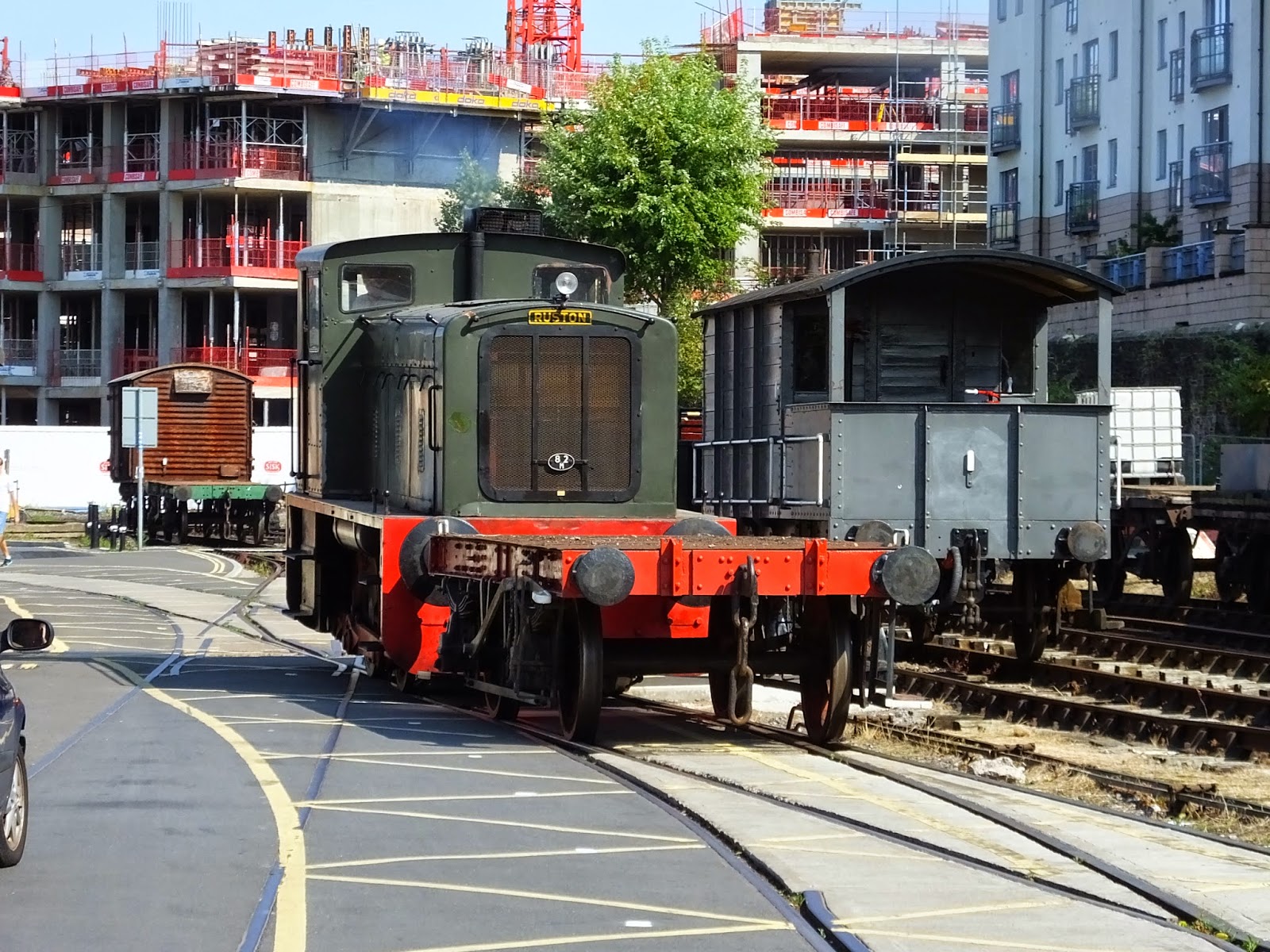(Bere Alston 29.8.1972 copyright Steve Sainsbury/Rail Thing)
News just in is that the Bere Alston to Tavistock line will now be rebuilt. ('And about time'!) I suspect most of you are thinking.
Take a look at the rather dire picture illustrating this piece. I'd only just passed 16 and had only been taking photos for a year is my excuse, but in a way it captures everything about this line. It was a snatched shot taken from the Gunnislake train as it reversed at the station. There are a few passengers on the platform, which shows that even in the nadir of rail travel in the UK this line was still fairly well used.
There's a very evocative final paragraph in the seminal work on these routes - The Withered Arm by T E Roche. The book had described this network of routes, and the sense of shock that a MAIN line could be closed. The author takes a little walk beyond Bere Alston, just a short while after closure, and almost talks himself into believing the line is still open, because the exit to the north is on a curve (as can be seen in the photo above) and nothing seems to have changed. And then he suddenly chances upon the buffers and stares in disbelief at the empty trackbed beyond.
Like the Waverley route the main SR route to Plymouth once boasted a network of branches off it, and these all needed to be closed before the final axe could be yielded. But the Callington branch was different, road services could NEVER replace the trains because of the way the Tamar cut a meandering course, isolating village en route from easy road access. So the line remained, though spitefully the last few miles from Gunnislake to Callington WERE closed. What it meant was that a good few miles of the old main line, from which the Gunnislake line branched off also had to be kept open. Six miles north of Bere Alston was the large and important town of Tavistock, which once boasted two stations, but this short piece of the line also had to close, so fanatical were the axemen of the time. Further on, at Meldon Viaduct, the main line reappeared, freight for a few miles, then Okehampton was allowed a passenger service - but even this was closed (to passengers) in 1972. I was there a few weeks before this stretch of line also closed to passengers, approached from Exeter of course. Freight kept going, and in recent years passenger services have been reintroduced on a few days a year. The line lives on here as well, if currently truncated!
Of course back in 1972 many people seriously believed the railways were finished, a withering rump remaining for those too poor to afford cars. Things have changed completely now, with rail in the ascendent and busier than it's been for almost a hundred years. We feel sorry for those people that are still tied to their cars, and now it's roads that are in decline (terminal this time).
Yet we're stuck with a fragmented rail network, designed for a world that's gone, and we need to get our railways back as quickly as we can, before the roads fail completely. There is the additional problem of climate change or, as it's now being rebranded, climate chaos. We all saw the terrible scenes at Dawlish last winter, when we were hit by ten storms in three months thanks to the stuck jetstream, directly caused by rapidly rising temperatures over the Arctic. We may find that many future winters are as extreme or more so, coupled with rapidly rising sea levels this spells the slow end of the 'alternative' route between Exeter and Plymouth via Dawlish, and the rapid rise of the Okehampton 'alternative'. Whilst we may get away with closing the ONLY route to Torbay, Plymouth and resurgent Kernow for now, and for a few weeks, that won't be acceptable in years to come when the road option is no longer available.
This is the REAL agenda behind the reopening of Tavistock. It may be dressed differently for public consumption, but I think we all know what this is really about. With Tavistock back on the network that gap to Meldon will seem tiny - smaller than the Borders Railway that will reopen next year for example (and through more challenging terrain!) Within a few years no doubt a solid and financed plan to close the link and give the west a second route to Plymouth, Torbay and Kernow will emerge.
But this is just one reopening. To build resilience and keep our economy moving as the oil age ends we'll need a thousand .....



























